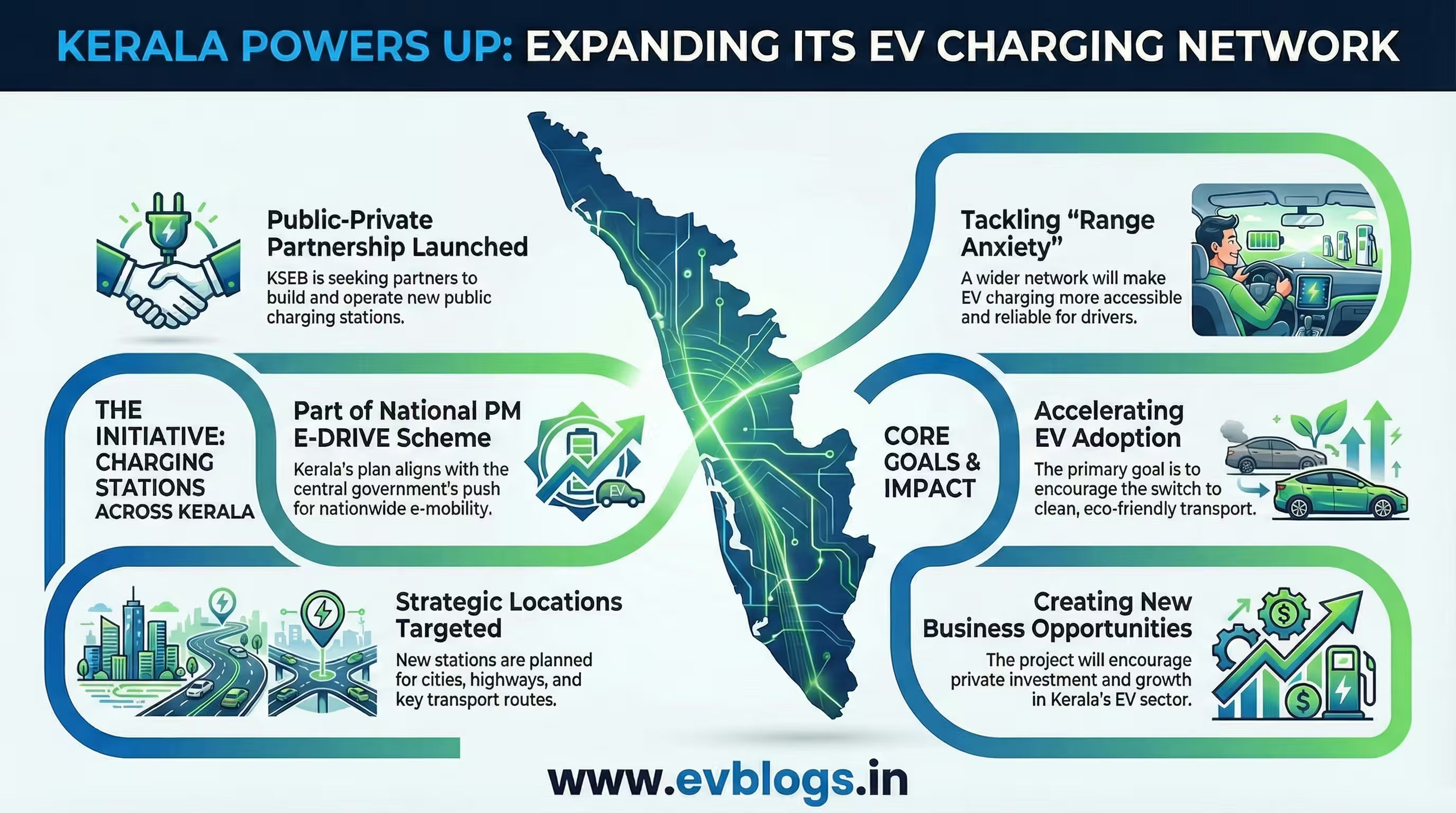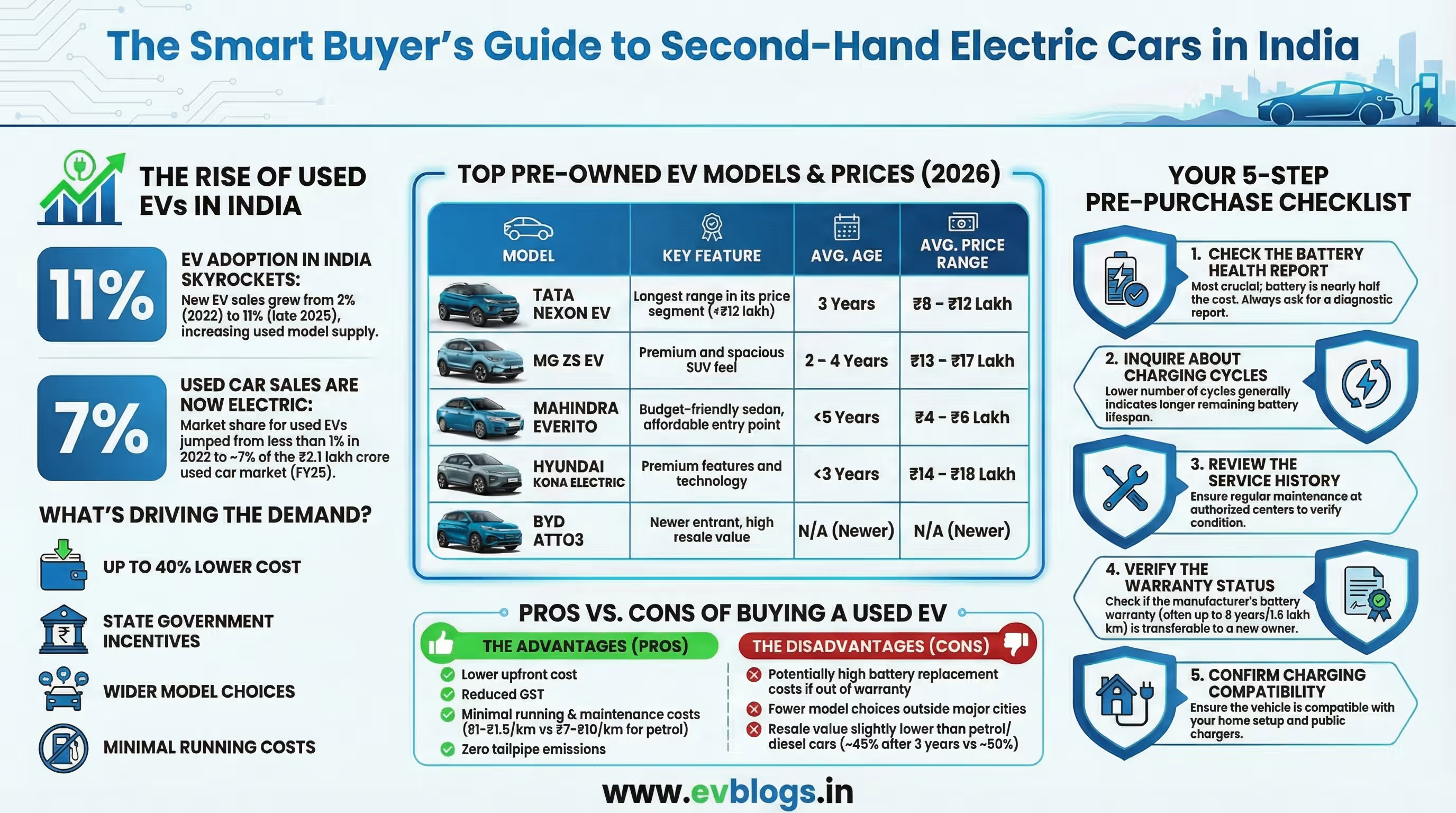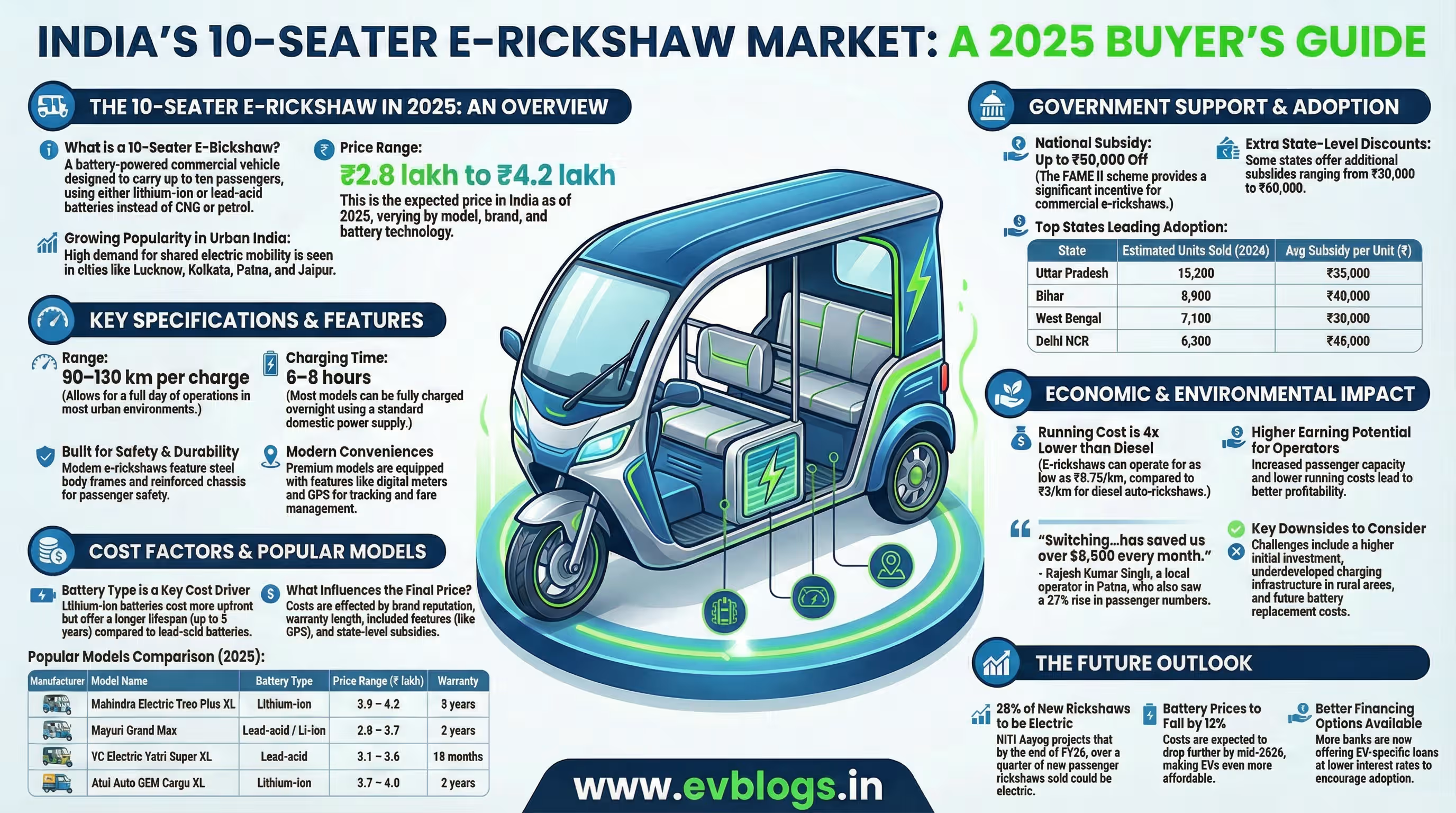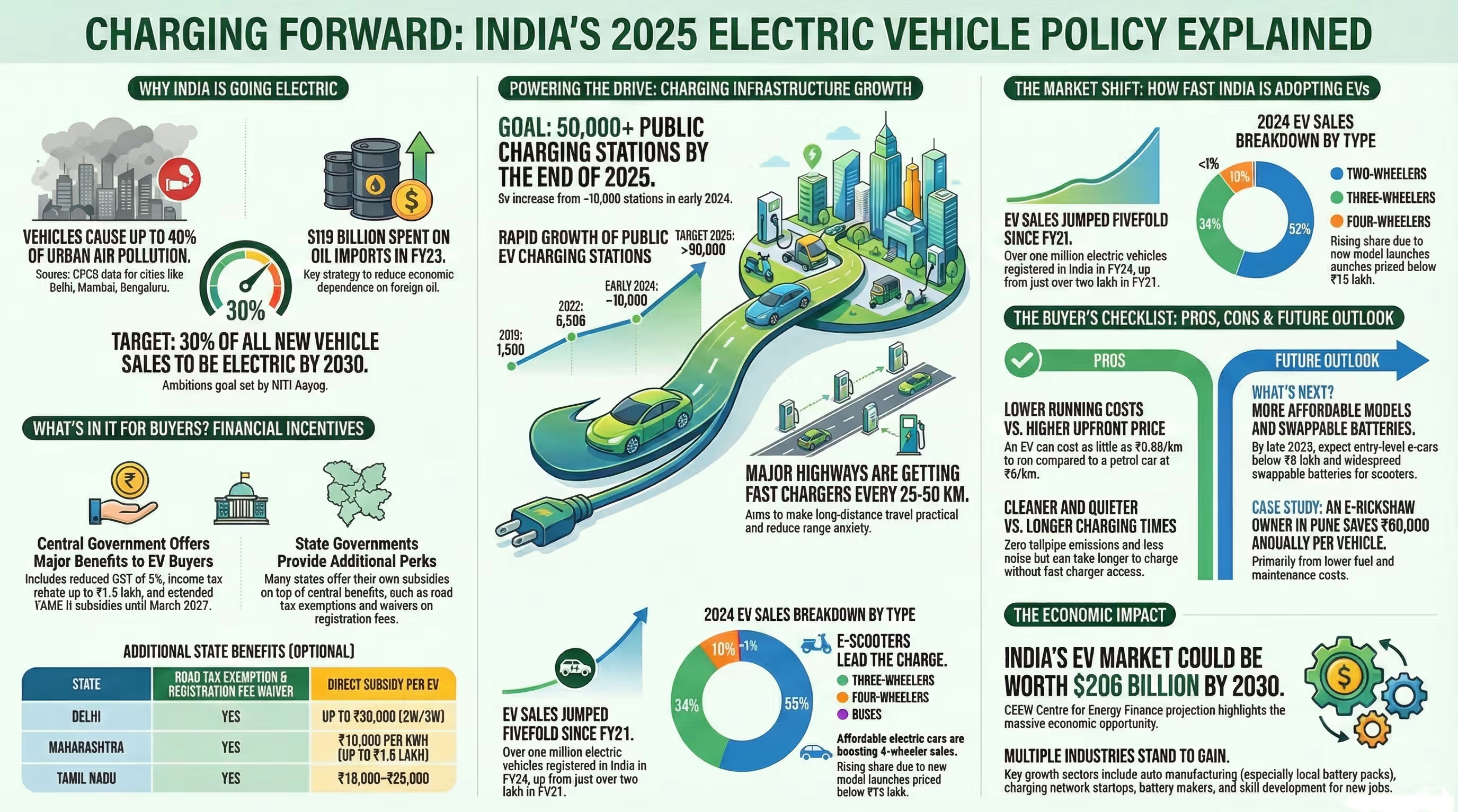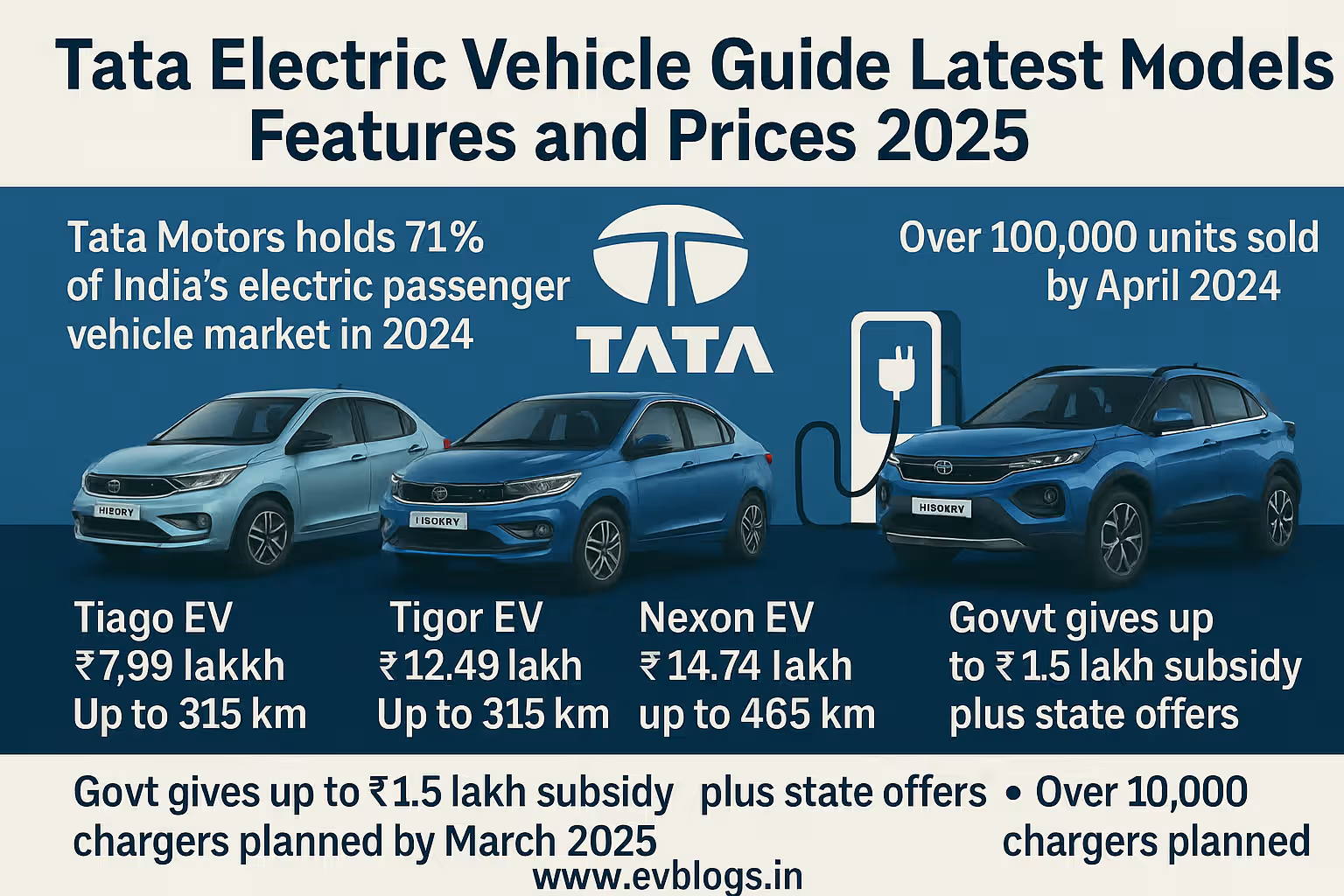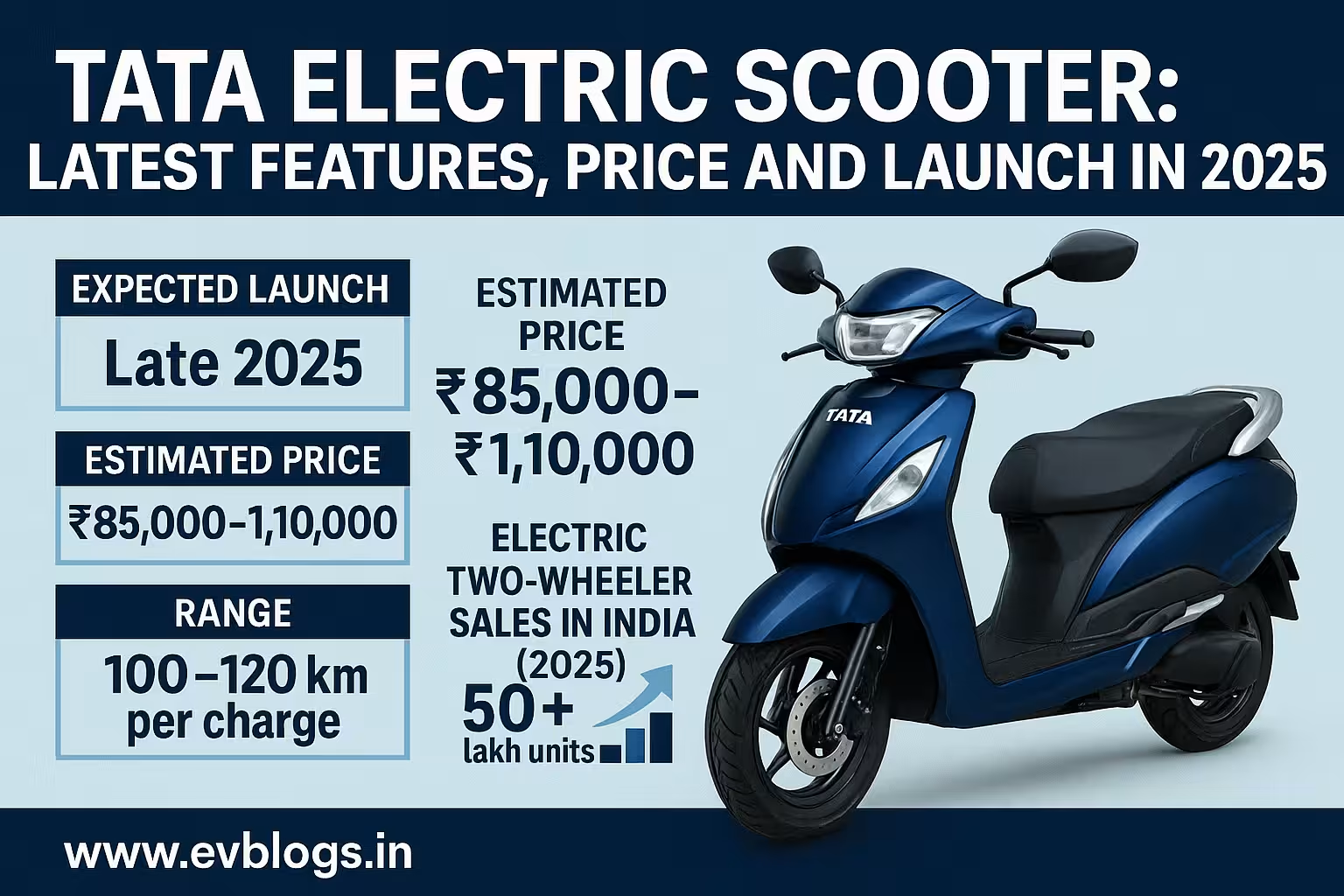Hedhvick Hirav
Hedhvick Hirav is a dedicated EV researcher and editor with over 4 years of experience in India’s growing electric vehicle ecosystem. Their contributions have been recognized in leading sustainability publications and automotive journals.
Summarize & analyze this article with
Choose an AI assistant and open this article directly:
Tip: if the AI doesn’t fetch the page automatically, paste the article URL manually.

What Is a Smart Electric Rickshaw and Why Should College Students in India Build One?
Smart electric rickshaws, also called e-rickshaws, are three-wheeled battery-powered vehicles that can be upgraded with technology like IoT sensors, GPS, solar panels, and smart charging. In 2025, they are a practical project for Indian college students who want to learn about electric vehicles, sustainability, and hands-on engineering. With India’s rapid urbanisation and push for electric mobility, these projects are not just academic—they can help shape the future of public transport.
Building your own smart electric rickshaw will give you:
- Real-world experience in EV assembly and electronics.
- Understanding of Indian e-mobility standards and compliance.
- Skills in software, hardware, and mechanical integration.
- Opportunities for innovation in affordable urban transport.
- A potential prototype for competitions, research, or even start-up ventures.
Why Now?
With the Indian government targeting 30% electric mobility by 2030, and FAME-II subsidies still active in 2025, the market for electric rickshaws is booming. In 2024 alone, over 1.2 million e-rickshaws were sold across India, according to EV industry consortium SMEV. This growth is expected to continue, especially in tier-2 and tier-3 cities.
Did You Know?
As of early 2025, more than 80% of India’s e-rickshaw market is informal, providing a huge scope for innovation and better technology adoption.
Who Should Try Building a Smart Electric Rickshaw in India?
If you are:
- An engineering or polytechnic student (mechanical, electrical, electronics, IT, or automotive).
- Part of a college robotics, automotive, or sustainability club.
- Looking for a final-year project or practical thesis topic.
- Interested in entrepreneurship or “Make in India” initiatives.
Building a smart e-rickshaw is ideal for you. It’s hands-on, impactful, and highly relevant to current job markets, especially in automotive startups and EV ventures.
Best Suited Streams:
- Mechanical/Automotive Engineering: Chassis, suspension, drive train.
- Electrical/Electronics Engineering: Motor, battery, sensors.
- Computer Science/IT: IoT, GPS, mobile apps for smart features.
- Renewable Energy: Solar charging components.
Important Skills You Will Develop
- EV system design and integration.
- Embedded systems and IoT programming.
- Battery management and safety.
- Sustainable and affordable prototyping.
- Real-world problem-solving with Indian constraints.
What Parts and Components Do You Need for a DIY Smart Electric Rickshaw in 2025?
A smart electric rickshaw combines standard EV parts with new-age “smart” features. Here’s an updated checklist for Indian users in 2025, considering local availability and cost.
Main Components:
- Chassis (mild steel or aluminium frame, Indian standard)
- BLDC hub motor (900W–1500W, preferred for Indian roads)
- Lithium-ion battery pack (48V/60V, 100-200 Ah, BIS-certified)
- EV controller (Programmable, compatible with smart features)
- Onboard charger (Indian 220V AC input, 10A+)
- Suspension and wheels (tubeless, heavy-duty for Indian conditions)
- Regenerative braking system (optional, for energy efficiency)
- Body panels (FRP or steel, customizable)
- Driver’s dashboard (digital, with IoT connectivity)
- GPS tracker and telematics module
- IoT sensors (for battery, location, load, etc.)
- Headlights, taillights, indicators (LED, energy-saving)
- Solar panel (optional, 100-300W for auxiliary charging)
- Mobile app connectivity (for smart diagnostics and security)
Additional Tools and Materials:
- Welding and fabrication tools
- Wire harness and connectors (ISI-certified)
- Soldering kit for electronics
- Open-source microcontroller (Arduino/ESP32/Raspberry Pi)
- Safety gear (gloves, masks, safety goggles)
Expert Insight
In 2025, lithium-ion batteries are 30% cheaper than 2021, and many Indian startups (like Exicom and Okaya) offer customizable packs specifically for e-rickshaw retrofits.
Which Are the Top Electric Rickshaw Kits and Parts Suppliers in India (2025)?
Finding reliable and affordable parts suppliers is key for DIY success. Here is a detailed comparison of leading Indian suppliers and brands for e-rickshaw components in 2025:
| Supplier/Brand | Product Range | Price (INR, approx.) | Quality Rating | Location | Extra Features/Support |
|---|---|---|---|---|---|
| Mahindra Electric | Motors, controllers | 24,000–65,000 | 5/5 | National | Warranty, tech support |
| Saera Electric | Batteries, kits | 30,000–70,000 | 4.5/5 | Delhi/NCR | Onsite service, training |
| Exicom Tele-Systems | Li-ion batteries | 32,000–75,000 | 5/5 | PAN India | Custom packs, BMS included |
| Okaya Power | Batteries, chargers | 28,000–68,000 | 4/5 | PAN India | Solar options, AMC available |
| Greenfuel Energy | Powertrain kits | 35,000–72,000 | 4/5 | Delhi, Bengaluru | IoT ready, fast shipping |
| Mayuri E-Rickshaw | Complete kits, chassis | 40,000–90,000 | 4/5 | Kolkata, Delhi | Frame customization |
| Atul Auto | Motors, controllers | 26,000–60,000 | 4.5/5 | Gujarat, Mumbai | OEM-grade components |
| Hero Electric | Body, electricals | 33,000–70,000 | 4/5 | PAN India | Brand reliability |
| Lohia Auto | Electronics, body | 29,000–65,000 | 4/5 | UP, Haryana | Warranty, student discounts |
| Jitendra EV | All-in-one kits | 34,000–78,000 | 3.5/5 | Maharashtra | Standard support |
Descriptions of Top Suppliers
- Mahindra Electric: Offers high-quality, OEM-grade motors and controllers. Their after-sales support is the best in India.
- Saera Electric: Known for reliable batteries and easy-to-assemble kits; offers free training for college teams.
- Exicom Tele-Systems: The leader in advanced lithium-ion packs with BMS; focuses on safety and smart features.
- Okaya Power: Pioneers in solar-integrated solutions; best for adding solar charging.
- Greenfuel Energy: Their kits are pre-tested for Indian urban conditions and include IoT modules.
- Mayuri E-Rickshaw: Best for frame and chassis; customizable for different rickshaw designs.
- Atul Auto: Provides OEM-grade motors and controllers, often used by professional e-rickshaw assemblers.
- Hero Electric: Trusted for electrical and wiring components.
- Lohia Auto: Offers budget-friendly kits with good warranty options.
- Jitendra EV: Decent for beginners; limited advanced support.
Did You Know?
More than 70% of Indian e-rickshaw kits now come with IoT compatibility as of 2025, making upgrades and smart features much easier to add.
How to Design and Plan Your Smart Electric Rickshaw Project for Indian Conditions?
Designing your e-rickshaw for Indian roads and weather is critical. Here are the factors you should consider in your planning phase:
Step-by-Step Planning:
- Define Use Case: Will it be for passenger, cargo, or campus use?
- Budget: Calculate total cost (INR 1–2 lakh typical for DIY smart rickshaw in 2025).
- Capacity: Plan for weight rating (Indian standard: 3–4 passengers or 350–400 kg).
- Route & Terrain: Indian city roads need higher ground clearance and robust suspension.
- Weatherproofing: Must handle rain, heat (up to 45°C), and dust.
- Compliance: Check local RTO rules and FAME-II guidelines for safety and eligibility.
- Smart Features: List IoT, GPS, app connectivity, and solar options.
- Project Timeline: 2–4 months is realistic for a college team.
Key Indian Design Considerations:
- Higher ground clearance (minimum 170 mm) for speed-breakers.
- Splash-proof electronics (IP54 rated).
- Modular battery design for easy swapping (Swappable battery infra is booming now).
- Large roof for solar panel installation (if required).
Why Add Smart Features to Your Electric Rickshaw? What Tech Can You Integrate?
Smart features make your rickshaw safer, more efficient, and future-ready. In India, 2025, demand for tech-enabled vehicles is rising, especially with the popularity of ride-hailing, shared mobility, and fleet management.
Popular Smart Features for Indian DIY E-Rickshaws:
- GPS Tracking: For anti-theft, route optimization, and real-time monitoring.
- IoT Sensors: Monitor battery health, location, load, and temperature.
- Mobile App Integration: Check vehicle status, book rides, or manage fleets.
- Remote Diagnostics: Predict and prevent failures via cloud.
- Smart Charging: Schedule charging or monitor power usage from your phone.
- Digital Dashboard: Speedometer, battery status, error codes, trip logs.
- Solar Charging: Reduces cost, extends range, ideal for sunny Indian cities.
- Geo-fencing: Useful for campus or restricted-area rickshaws.
Advanced Options:
- Voice assistant for driver commands (using Google Assistant APIs).
- Contactless payments for passenger fares (UPI integration).
- Energy recovery via regenerative braking.
Expert Insight
As per an EVreporter survey, 60% of new e-rickshaw buyers in 2025 prefer vehicles with GPS and IoT for better safety and fleet management.
How Much Does It Cost to Build a Smart Electric Rickshaw (DIY) in India in 2025?
Costs have dropped significantly due to better supply chains, FAME-II subsidies, and local manufacturing. Let’s break down the typical expenses for a college-level DIY project in 2025:
| Component | Approx. Cost (INR) | Notes (2025) |
|---|---|---|
| Chassis & Body | 34,000 | Customizable, pre-welded options |
| BLDC Motor (1kW) | 18,000 | Higher power = higher cost |
| Li-ion Battery | 38,000 | BIS-certified, 60V/120Ah, swappable |
| Controller | 12,000 | Programmable, Indian standard |
| Charger | 6,000 | Fast charging enabled |
| Wheels/Suspension | 7,500 | Heavy-duty, Indian roads |
| Electronics/IoT | 9,500 | Sensors, GPS, microcontroller |
| Solar Panel (opt.) | 10,000 | For 200W module |
| Dashboard | 4,000 | Digital, with app support |
| Misc Hardware | 7,000 | Wiring, fasteners, paint, etc. |
| Total | 1,46,000 | Without solar: 1,36,000 |
Budget Tips:
- Bulk orders or student discounts can reduce costs by 10–15%.
- Many suppliers (see above) offer student project kits with extra tools or manuals.
- For first prototypes, consider reusing frames or local fabrication to save money.
Did You Know?
A commercial-grade smart e-rickshaw in India costs between INR 1.8–2.3 lakh in 2025. DIY projects can save you up to 35% if sourced wisely.
When and Where to Test Your Smart Electric Rickshaw Prototype in India?
Testing is a crucial phase for any college DIY project. You need real-world data and performance feedback.
Ideal Testing Locations:
- Your college campus (parking lots, internal roads).
- Designated city EV test tracks (many state EV policies support this).
- Partnered local workshops or RTOs (for compliance and inspection).
- Community events, local EV expos, or innovation fairs.
What to Test For?
- Range per charge (minimum 80 km is standard in 2025).
- Battery charging time (ideally under 4 hours).
- Speed and acceleration (top speed: 25–30 km/h for safety).
- Braking and handling (on wet and rough surfaces).
- Usability of smart features (live GPS tracking, mobile app alerts, etc.).
- Durability under passenger/cargo load.
Testing Timeline:
- Allocate at least 2–3 weeks for iterative testing and tuning.
Safety Disclaimer:
- Always follow safety guidelines. Wear helmets, use test tracks, and avoid public roads until your prototype is fully compliant.
Expert Insight
Many states like Maharashtra and Karnataka offer special grants and awards for student EV prototypes that pass local testing with flying colours.
Which Government Policies and Subsidies Affect DIY Electric Rickshaw Projects in India (2025)?
Understanding regulations is key for both compliance and cost savings. In 2025, Indian policies strongly favour EV innovation:
Central Government (FAME-II, 2025):
- Subsidy of up to INR 30,000 for registered e-rickshaw kits with BIS-certified batteries.
- Extra incentives for vehicles with swappable batteries and smart features.
- No road tax or registration fees for prototypes used in academic or innovation events (subject to RTO approval).
State-Specific Policies (selected examples):
- Delhi EV Policy: Up to INR 7,500 extra subsidy for e-rickshaw retrofits.
- Maharashtra: Special grants for college/university projects (up to INR 50,000).
- Karnataka: Free access to state-run EV testing labs for student teams.
- Tamil Nadu: Incubation support and fast-track permits for student EV start-ups.
Important Compliance Steps:
- Use only AIS-048/IS-14272 certified components (battery, motor, controller).
- Get a temporary registration or test permit from your local RTO.
- Follow all safety and environmental standards (as per 2025 MoRTH guidelines).
Did You Know?
In 2025, over 20 Indian states have dedicated EV cells to help student innovators connect with industry mentors and government officials.
How to Assemble, Program, and Test the Smart Features on Your DIY E-Rickshaw?
Assembly is a team effort. Here’s a simplified workflow for Indian college students in 2025:
Mechanical Assembly:
- Weld/fabricate the chassis, mount axles and suspension.
- Fix motor and transmission; align wheels.
- Install body panels, seats, and roof.
Electrical Assembly:
- Mount battery securely; ensure waterproofing.
- Connect motor, controller, and charger (follow Indian wiring colour codes).
- Install digital dashboard, headlights, and other electricals.
Programming Smart Features:
- Configure microcontroller (Arduino/ESP32) for sensor data.
- Set up GPS and IoT module with mobile or web app.
- Program safety cutoffs (overcurrent, low battery).
- Enable remote diagnostics and real-time alerts.
Testing and Debugging:
- Power up each subsystem separately (battery, motor, sensors).
- Use multimeter and diagnostic tools to check connections.
- Validate all smart features—simulate low battery, run GPS, test app notifications.
- Conduct multiple test runs with increasing load and real-world use cases.
Expert Insight
Most Indian student projects use open-source code and platforms like Blynk or MIT App Inventor for app development, making it easy to customize features.
What Are the Biggest Challenges and Solutions for Electric Rickshaw DIY Projects in India?
Indian conditions and market realities pose unique hurdles. Here are the top issues and proven solutions:
Common Challenges:
- High upfront battery cost (solution: opt for rental/swappable batteries).
- Lack of EV expertise in small towns (solution: online mentoring, industry tie-ups).
- Sourcing certified parts (solution: use only reputed suppliers, as listed above).
- Weatherproofing—rain and dust damage (solution: use IP54+ rated enclosures, test for leaks).
- Compliance—navigating RTO processes (solution: connect with state EV cells, use academic permits).
Tips from Past Successful Projects:
- Document every step—helps with grants, competitions, and troubleshooting.
- Network with alumni or local EV startups for guidance.
- Use modular design—easy to upgrade or repair.
- Focus on safety; don’t cut corners on brakes or wiring.
Actual User Story (2024-25):
A team from IIT Madras built a solar-powered smart e-rickshaw for campus transport. They used local suppliers for the frame, integrated a GPS module, and developed a mobile app for booking rides. The team won the state-level EV Hackathon (2024) and now collaborates with an Indian mobility start-up for commercial deployment.
Did You Know?
NITI Aayog’s 2025 report projects that student-led EV projects will contribute to 10% of India’s new EV innovations by 2030.
How Do India’s Top 10 Electric Rickshaw Models (2025) Compare With DIY Projects?
To make an informed decision, see how your DIY e-rickshaw stacks up against the best commercial models available in India in 2025.
| Model Name | Price (INR) | Battery Type | Range (km) | Smart Features | Warranty | Fleet Ready | USP |
|---|---|---|---|---|---|---|---|
| Mahindra Treo | 2,10,000 | Li-ion, 48V | 130 | GPS, app, diagnostics | 3 yrs | Yes | Best build, nationwide support |
| Saera ERick | 1,98,000 | Li-ion, 60V | 120 | IoT, digital dash | 2 yrs | Yes | Popular in Delhi/NCR |
| Okaya Classic | 1,85,000 | Li-ion, 60V | 100 | IoT, solar option | 2 yrs | Yes | Solar-ready |
| Atul Elite Plus | 1,89,000 | Li-ion, 48V | 110 | GPS, digital dash | 2 yrs | Yes | Good after-sales |
| Lohia Humrahi | 1,82,000 | Li-ion, 60V | 100 | IoT, mobile app | 1 yr | Yes | Budget-friendly |
| Greenfuel Smart | 1,94,000 | Li-ion, 60V | 120 | Fleet IoT, solar, BMS | 2 yrs | Yes | Advanced BMS |
| Mayuri Pro | 1,79,000 | Li-ion, 48V | 100 | GPS, digital dash | 1 yr | Yes | High ground clearance |
| Hero Electric E-Rick | 1,99,000 | Li-ion, 60V | 110 | App, IoT, diagnostics | 2 yrs | Yes | Brand trust |
| Jitendra City EV | 1,75,000 | Li-ion, 48V | 90 | Digital dash | 1 yr | Yes | Best for students |
| YC Electric Yatri | 1,80,000 | Li-ion, 60V | 100 | GPS, mobile app | 1 yr | Yes | Lightweight frame |
| Your DIY Project | 1,36,000–1,46,000 | Li-ion, 60V/48V | 90–100 | Custom IoT, solar, app | As chosen | Yes (pilot) | Fully customizable, student-led |
In-Depth List: What Makes Each Model Unique?
- Mahindra Treo: Industry benchmark for durability, nationwide support, and advanced analytics.
- Saera ERick: Very popular in North India, robust for city and peri-urban routes.
- Okaya Classic: Only model with a factory-integrated solar charging option.
- Atul Elite Plus: Balanced performance and affordable maintenance.
- Lohia Humrahi: Great for those who want IoT at a budget price.
- Greenfuel Smart: Most advanced in battery safety (BMS) and solar compatibility.
- Mayuri Pro: Suited for rougher Indian roads thanks to its frame design.
- Hero Electric E-Rick: Reliable and widely supported, with advanced diagnostics.
- Jitendra City EV: Entry-level, easy to maintain, ideal for student projects.
- YC Electric Yatri: Lightweight and energy-efficient, for shorter urban trips.
- Your DIY Project: Allows for full customization of features, lowest cost if sourced well, but no factory warranty.
Did You Know?
Many colleges in India have started using student-built e-rickshaws for on-campus mobility, reducing carbon footprint and operational costs.
How Do You Ensure Long-Term Maintenance and Upgrades for Your Smart Electric Rickshaw?
Maintenance is often overlooked but vital for real-world use. DIY projects require robust planning for repairs, spares, and future upgrades.
Tips for Long-Term Care:
- Use only standard, widely available parts (as per BIS/IS standards).
- Keep a detailed log of all wiring diagrams, software code, and component specs.
- Plan easy access to battery and motor for quick swapping or repairs.
- Train multiple team members on assembly/disassembly.
- Register your project with your college’s innovation or EV club for continuity.
Upgrade Ideas (2025):
- Add a higher-capacity battery for more range.
- Integrate new IoT modules (for air quality or passenger counting).
- Retrofit with solar panels as prices drop further.
- Upgrade software for better route optimization or fleet management.
Sourcing Spares:
Most Indian suppliers offer student accounts or AMC (Annual Maintenance Contracts) at discounted rates for educational projects.
Expert Insight
Some top engineering colleges partner with local EV workshops for maintenance, giving students hands-on skills and ensuring rickshaws are always running.
What Are the Career, Entrepreneurship, and Research Opportunities After Building a Smart Electric Rickshaw?
Completing a smart electric rickshaw project opens doors across the Indian EV ecosystem:
Career Launchpads:
- Internships and jobs with Indian EV startups (Ola Electric, Ather, Saera, Sun Mobility).
- R&D roles at automotive giants (Mahindra, Tata, Bajaj).
- Government fellowships in NITI Aayog’s EV innovation programme.
Startup & Entrepreneurship:
- Prototype to pilot – convert your project into a commercial solution for campuses, gated societies, or last-mile logistics.
- Apply for government or state EV innovation grants.
- Partner with local fleet operators to test and scale your product.
Research:
- Publish papers on energy optimization, IoT integration, or solar charging in Indian journals.
- Participate in national/international EV design competitions.
- Collaborate with faculty for patenting innovative features.
Did You Know?
Over 50 Indian student teams have launched their own EV mobility startups since 2023, often starting with college rickshaw prototypes.
What Is the Final Verdict? Should Indian College Students Build a Smart Electric Rickshaw in 2025?
Absolutely Yes—If You Want Skills, Impact, and Opportunities!
- Learning: You get hands-on exposure to EVs, IoT, and mobility solutions that are hot in the Indian job market.
- Savings: DIY costs are much lower (up to 35% less), and you can fully customise features for your use case.
- Impact: Your project can improve campus mobility, reduce air pollution, and lead to real business or research opportunities.
- Recognition: Government, startups, and even colleges are investing in student-led EV innovation. Awards, funding, and internships await successful projects.
- Network: Opens the door to India’s rapidly growing EV ecosystem.
But…
- Make sure you use certified parts and follow Indian safety/compliance rules.
- Be ready for hands-on work, trial and error, and learning from challenges.
Decision:
If you’re an Indian college student with interest in sustainable transport, smart tech, or entrepreneurship—building a smart electric rickshaw in 2025 is one of the best projects you can take up!
FAQs
Q1: Can I build a smart e-rickshaw as a solo project, or is a team needed?
A: While possible solo, it’s highly recommended to work as a team (3–6 members) due to the multidisciplinary skills required.
Q2: Do I need RTO approval for a college e-rickshaw prototype?
A: For campus use or events, a temporary/test permit or exemption is usually provided. For public road use, RTO registration is mandatory.
Q3: Which programming languages are best for smart features?
A: C/C++ for microcontroller code; Python or JavaScript for IoT/cloud; use platforms like Blynk or MIT App Inventor for mobile apps.
Q4: Is solar charging essential for my smart e-rickshaw?
A: Not essential, but highly beneficial in sunny parts of India. Helps reduce grid electricity usage and extends range.
Q5: What support is available for first-time student builders?
A: Many Indian EV suppliers, government EV cells, and college innovation hubs offer mentoring, training, and special grants for new student teams.
Ready to make an impact? Start building your smart electric rickshaw and join the next generation of Indian EV innovators!


